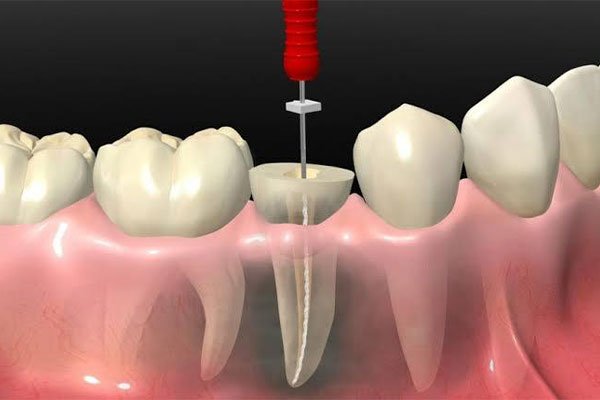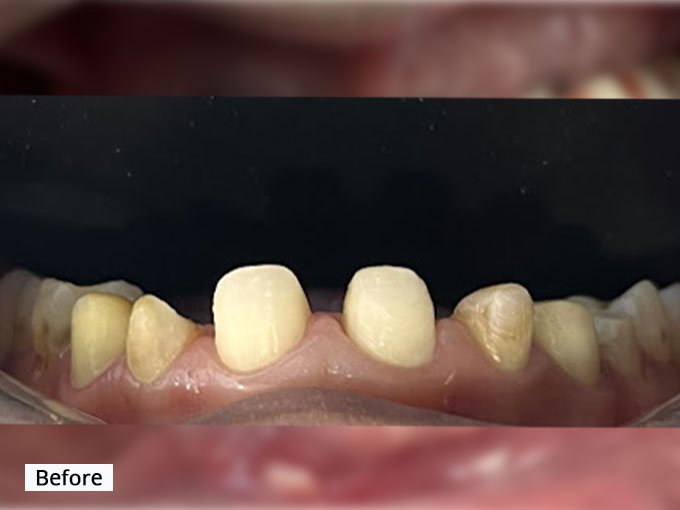Root Canal Treatment
Root canal treatment expertly addresses tooth infections, meticulously removing damaged pulp, and sealing the canals to preserve natural teeth and alleviate discomfort.
Root canal treatment (RCT) becomes necessary when the pulp, the innermost layer of the tooth becomes infected or inflamed due to deep decay, repeated dental procedures on the tooth, cracks or chips in the tooth, or trauma. If left untreated, the infection can spread to the surrounding tissues, leading to abscesses, severe pain, and eventually tooth loss. RCT aims to save the natural tooth by removing the infected or damaged pulp.

Root canal treatment (RCT) involves several steps to save a tooth that is infected or damaged. First, the dentist numbs the area around the tooth with local anesthesia. Then, they create an opening in the crown of the tooth to access the pulp chamber and root canals. Next, they remove the infected or damaged pulp tissue and clean and shape the canals. The canals are filled with a biocompatible material to seal them and prevent reinfection. Finally, the opening in the crown is sealed with a filling. RCT aims to alleviate pain, preserve the natural tooth, and restore oral health effectively.
HEALTHY & HAPPY
Our focus is on your overall well
-being and helping you achieve
optimal health &
wellness
comfort
DR. SHARMA'S






Benefits of Root Canal Treatment:
- Preservation of Natural Tooth: Root canal treatment allows patients to retain their natural teeth, which is essential for maintaining proper oral function and aesthetics.
- Pain Relief: By removing the infected tissue, root canal treatment alleviates the severe pain associated with tooth infections.
- Prevention of Further Complications: Treating the infection prevents it from spreading to surrounding tissues and causing more serious health issues.
- Efficiency: With advancements in technology and techniques, root canal treatment is now more efficient and comfortable than ever before.
The Procedure:
- Assessment and X-rays: The dentist examines the tooth and takes X-rays to assess the extent of the damage and plan the treatment.
- Anesthesia: Local anesthesia is administered to ensure the patient is comfortable throughout the procedure.
- Access Opening: The dentist creates an opening in the crown of the tooth to access the pulp chamber.
- Cleaning and Shaping: Specialized instruments are used to remove the infected pulp tissue and clean the inner chamber and root canals.
- Filling: Once cleaned, the space is filled with a biocompatible material called gutta-percha to seal the root canals and prevent further infection.
- Restoration: A temporary or permanent filling is placed in the access opening to restore the tooth’s structure and function.
